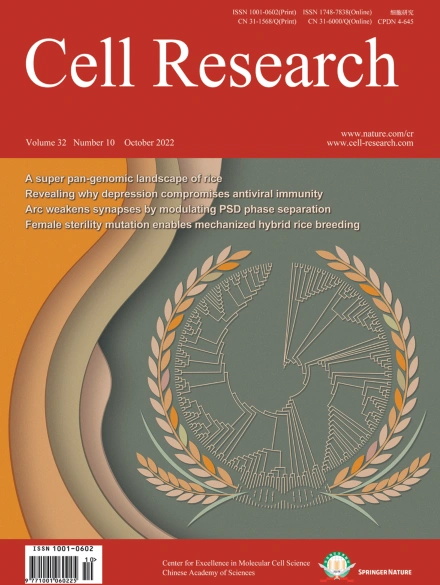
Advanced Search
Submit Manuscript
Advanced Search
Submit Manuscript
Volume 32, No 10, Oct 2022
ISSN: 1001-0602
EISSN: 1748-7838 2018
impact factor 17.848*
(Clarivate Analytics, 2019)
Volume 32 Issue 10, October 2022: 931-945
A spontaneous thermo-sensitive female sterility mutation in rice enables fully mechanized hybrid breeding
Haoxuan Li1,2,3 , Chenjiang You4 , Manabu Yoshikawa5 , Xiaoyu Yang6,7 , Haiyong Gu8 , Chuanguo Li8 , Jie Cui6 , Xuemei Chen4,* , Nenghui Ye3,* , Jianhua Zhang1,2,* , Guanqun Wang1,2,*
1Department of Biology, Hong Kong Baptist University, Hong Kong, ChinaMale sterility enables hybrid crop breeding to increase yields and has been extensively studied. But thermo-sensitive female sterility, which is an ideal property that may enable full mechanization in hybrid rice breeding, has rarely been investigated due to the absence of such germplasm. Here we identify the spontaneous thermo-sensitive female sterility 1 (tfs1) mutation that confers complete sterility under regular/high temperature and partial fertility under low temperature as a point mutation in ARGONAUTE7 (AGO7). AGO7 associates with miR390 to form an RNA-Induced Silencing Complex (RISC), which triggers the biogenesis of small interfering RNAs (siRNAs) from TRANS-ACTING3 (TAS3) loci by recruiting SUPPRESSOR OF GENE SILENCING (SGS3) and RNA-DEPENDENT RNA POLYMERASE6 (RDR6) to TAS3 transcripts. These siRNAs are known as tasiR-ARFs as they act in trans to repress auxin response factor genes. The mutant TFS1 (mTFS1) protein is compromised in its ability to load the miR390/miR390* duplex and eject miR390* during RISC formation. Furthermore, tasiR-ARF levels are reduced in tfs1 due to the deficiency in RDR6 but not SGS3 recruitment by mTFS1 RISC under regular/high temperature, while low temperature partially restores mTFS1 function in RDR6 recruitment and tasiR-ARF biogenesis. A miR390 mutant also exhibits female sterility, suggesting that female fertility is controlled by the miR390-AGO7 module. Notably, the tfs1 allele introduced into various elite rice cultivars endows thermo-sensitive female sterility. Moreover, field trials confirm the utility of tfs1 as a restorer line in fully mechanized hybrid rice breeding.
https://doi.org/10.1038/s41422-022-00711-0